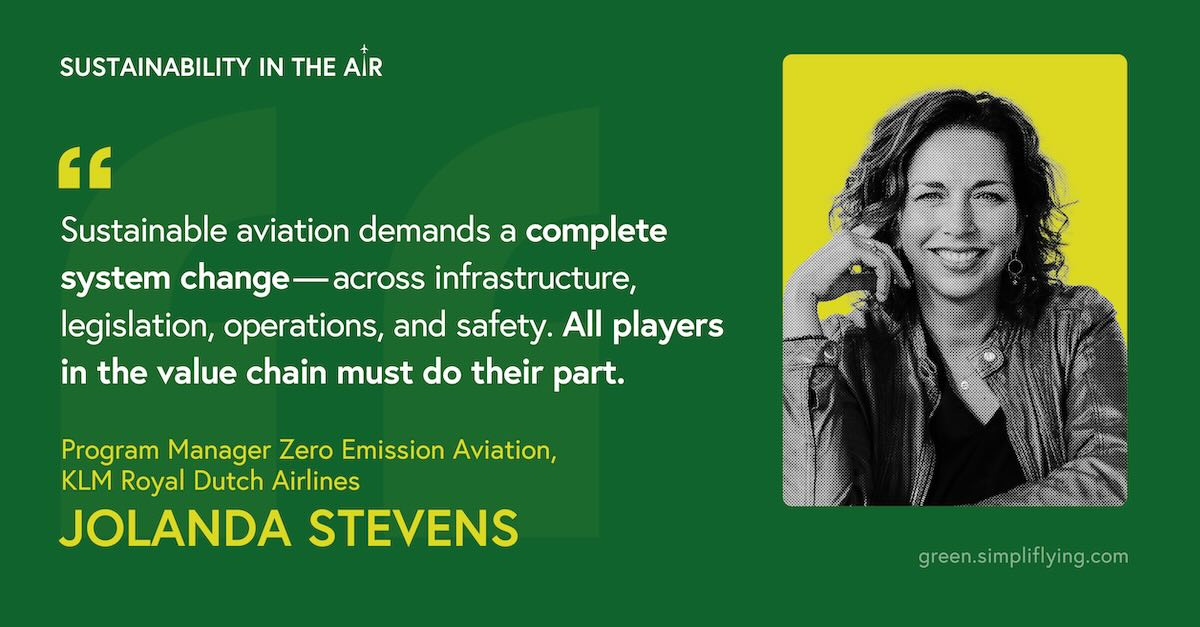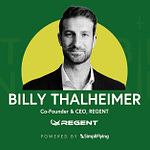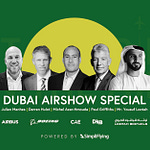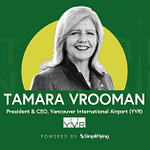In this episode of our ‘Sustainability in the Air’ podcast, Jolanda Stevens, Program Manager for Zero Emission Aviation at KLM, speaks with SimpliFlying’s CEO Shashank Nigam about how the airline is preparing for a more sustainable future of aviation through innovative technologies, partnerships with new aircraft manufacturers, and strategic investment in emerging solutions.
With over 105 years of aviation history, KLM is now focusing on what the next century of flight will look like. Stevens, who began her career as a KLM pilot before transitioning to her current role, brings a unique perspective to this challenge, combining operational experience with forward-thinking leadership.
Here are the key highlights of the conversation:
KLM’s unique approach to disruptive innovation (3:01)
Why the next century of aviation demands a reinvention (8:44)
Electric vs hydrogen: Finding the right technology mix (10:46)
How KLM selects which startups to support (13:18)
Changing the traditional airline-manufacturer relationship (18:53)
What airlines bring to new technology development (22:35)
Why a system-wide transformation is needed for zero-emission aviation (32:02)
Rapid fire! (35:40)
Keep reading for a detailed overview of the episode.
Why re-invention matters to a 105-year-old legacy airline
For an airline with over a century of history, looking ahead to the next 100 years demands both strategic vision and practical innovation. After all, the aviation industry is under increasing pressure to address its climate impact, with ambitious goals to achieve net-zero emissions by 2050.
“Every decade, you need to reassess your methods, products, and people to ensure they remain future-proof,” shares Stevens. “For the last 100 years, we've worked to stay at the forefront of the industry, particularly in sustainability. The key question now is: Are we still doing the right thing? While flying people from A to B remains our core business, we must adapt to the times. We need to keep doing what we do best while also looking ahead to the next 100 years and determining how KLM can remain relevant. This is a responsibility we take seriously," she adds.
While alternative aviation fuels offer an immediate solution, achieving true transformative change will require the development of entirely new aircraft technologies. KLM has a distinct role within the organisation focused specifically on driving the development of zero-emission aircraft.
“Sustainability efforts in an airline cover many areas, from updating onboard products and improving operations to exploring new technologies. While each is distinct, all contribute to our goal of reaching net-zero emissions by 2050. What sets our team apart is that we focus on disruptive innovation. The technologies we’re working on are still in early stages, with tangible results far in the future. However, the work we’re doing now is crucial to making future progress possible,” shares Stevens.
This approach reflects a shift in how the airline engages with aircraft manufacturers, moving from simply evaluating and purchasing finished products to having a dedicated role focused on contributing to the development of new aviation technologies.
5 takeaways from the conversation
1. A collaborative approach to developing future aircraft
Rather than simply waiting to see what products become available and then deciding whether to purchase them, KLM is actively participating in the development of new aircraft.
“The process we’re going through with startups is different from how we typically approach new aircraft. Normally, we match an aircraft to our network specs. Right now, it’s the other way around – we’re getting aircraft specs and figuring out how to use them, which is a shift in how we work.”
KLM brings valuable operational expertise and customer insights to these collaborations, helping shape aircraft that will be practical and effective in real-world commercial settings. Stevens describes this relationship as mutually beneficial:
“It’s a mutual relationship. OEMs bring new ideas, technologies, and business models, and we approach this with humility, ready to learn from them. In turn, with 105 years of experience, we bring expertise in running an airline, creating commercial products, and integrating technology into our network. This partnership not only offers potential but also attracts investors, enabling further growth. We bring both expertise and a strong brand to these new companies.”
The airline engages with manufacturers without requiring firm orders upfront – a recognition that these technologies are still emerging. “For us, this is a bit of a search. We’re evaluating whether to place an order now or wait,” notes Stevens. “While manufacturers are happy we’re involved and would like us to order, we need more certainty about the emerging technology before making that decision.”
2. Not picking just one technology winner
Rather than betting on a single technology, KLM is pursuing multiple pathways to zero-emission aviation, recognising that different solutions will be appropriate for different segments of their network.
As Stevens puts it: “The purpose of these [zero emissions] technologies is interconnected, with each innovation playing a different role in the overall solution. I believe we shouldn’t choose one technology over the other; instead, we should be strategic in deciding where to invest our resources and efforts.”
For shorter routes, battery-electric aircraft may offer the most viable solution in the near term, though weight limitations currently restrict their range. Hydrogen power, whether through fuel cells or combustion, presents potential for medium-range flights with greater payload capacity, though significant infrastructure challenges remain. Meanwhile, SAF will continue to play a crucial role for long-haul operations until zero-emission technologies mature sufficiently, shares Stevens.
This balanced, pragmatic approach takes into account the technical realities while optimising decarbonisation opportunities across the airline’s diverse operations.
3. From evaluation to implementation: the decision-making process
KLM has developed a systematic process for evaluating potential technology partners, balancing visionary ambition with practical considerations. When assessing startups and their proposed aircraft concepts, the airline examines both technical aspects and organisational capability.
“We engage with everyone, as we believe all players deserve attention and, when possible, advice from the airline, including smaller players,” explains Stevens. However, given the constraints of time and resources, KLM needs to carefully consider where to direct its efforts.”
The evaluation process has three critical parts:
Strategic fit – KLM first assesses whether the aircraft concept aligns with its long-term fleet strategy. “We ask, is this a concept that could potentially fit into our future fleet plan?” Stevens explains. The airline scrutinises technical assumptions about range, payload, and efficiency, emphasising alignment: “If we don’t agree on those assumptions, we end up with differing conclusions. It’s important we align on what’s accurate.”
Company viability – Beyond the technology, KLM evaluates the team’s expertise and financial stability. “It’s essential to understand what kind of knowledge base the company has, who’s behind it, and their background,” says Stevens, stressing that aviation-specific experience – especially in certification – is critical. The airline also examines funding models and investor backing to gauge long-term potential.
Balanced decision-making – While data drives the process, intuition plays a role. “Sometimes, it’s about gut feeling,” Stevens admits. “Sometimes everything feels right, and sometimes it doesn’t.”
This combination of objective analysis and intuition helps KLM make informed decisions about which technologies and companies to support.
4. Passenger acceptance and practical implementation
Beyond the technical challenges of zero-emission aircraft development, KLM recognises the importance of addressing passenger acceptance and practical operational considerations. The airline is proactively researching how customers will respond to new aircraft types and what operational changes might be needed.
Stevens explains, “What new manufacturers are really seeking is guidance from airlines, not just on high-level aircraft requirements and technology. It’s also crucial to understand how the aircraft is usable, how it’s perceived, and what additional conditions are needed to operate it effectively.”
KLM is conducting customer research to gauge reactions to new technologies: “We’re engaging with our passengers to understand how they would feel about flying in an electric aircraft. How would it feel? Would they feel safe? Would they need additional reassurance to feel secure? Are they willing to pay a little more, or accept a longer flight time? These are the kinds of questions we’re exploring. For both new and legacy OEMs, this can be difficult to grasp, as they typically don’t interact directly with customers or ground and handling crews.”
5. Leading industry transformation through responsible action
KLM sees its role in developing zero-emission aviation as part of a broader responsibility to lead industry transformation. As one of the world’s oldest airlines, it seeks to bring credibility, operational expertise, and customer trust that can help accelerate the adoption of new technologies.
“This requires a complete system change,” emphasises Stevens, “a change for infrastructure, legislation, ground handling, safety… In order to make this happen and prepare for the first hydrogen or battery-electric flight, all players in the value chain must play their part.”
Rather than waiting for new technologies to emerge, KLM has taken an active role in shaping the future. “I am strongly convinced – and my entire company shares this belief – that, as an operator, KLM has a responsibility to play this role. If we don’t, the pace of progress will slow down, critical knowledge may not emerge, or the credibility of our brand would be affected.”
Despite the challenges, Stevens remains optimistic about the industry’s capacity to transform: “People are incredibly creative, and as a species, I firmly believe we can solve even the most complex problems. We’ve proven this in the past, and I’m confident – as are many in the industry – that we can innovate our way out of the current situation and successfully decarbonise aviation.”
‘Sustainability in the Air’ is the world’s leading podcast dedicated to sustainable aviation. Through in-depth conversations with top aviation leaders, we break through the clutter and provide a clear roadmap for a net-zero future.













